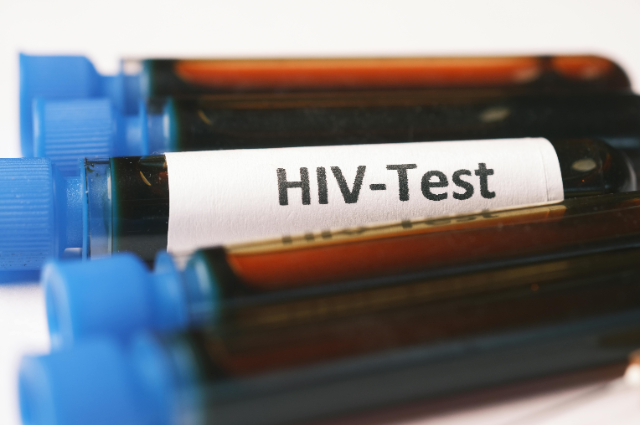
The National AIDS Policy plays a pivotal role in addressing the complex challenges posed by the HIV/AIDS epidemic. This article delves into the key components of the policy, its evolution, and its impact on public health.
Historical Context
The origins of the National AIDS Policy can be traced back to the early days of the HIV/AIDS epidemic. Initially, responses were fragmented, but as the crisis escalated, the need for a comprehensive national strategy became evident. The policy framework aims to coordinate efforts, allocate resources efficiently, and provide a unified approach to combating the spread of HIV.
Evolution of the Policy
Over the years, the National AIDS Policy has undergone significant evolution in response to emerging scientific knowledge, changing demographics, and evolving societal attitudes. From the initial emphasis on prevention and education to the inclusion of broader healthcare initiatives, the policy reflects an adaptive response to the dynamic nature of the epidemic.
Key Components
- Prevention and Education: The policy places a strong emphasis on preventive measures, including education campaigns to raise awareness and promote safe practices. This includes advocating for regular testing, condom use, and harm reduction strategies.
- Treatment Access: Ensuring access to antiretroviral therapy (ART) is a crucial aspect of the policy. Efforts are directed towards making life-saving medications available to all individuals living with HIV, regardless of socio-economic factors.
- Stigma Reduction: Addressing the stigma associated with HIV/AIDS is a central theme. The policy aims to foster an inclusive environment, challenging discriminatory attitudes and promoting empathy towards those affected.
- Research and Innovation: The policy supports ongoing research efforts to understand the virus better, develop new treatment modalities, and work towards an eventual cure. Innovation is key to staying ahead of the evolving nature of the epidemic.
Impact on Public Health
The success of the National AIDS Policy can be measured in various ways. Reductions in new HIV infections, increased access to treatment, and improvements in overall public awareness are indicative of positive outcomes. However, challenges such as disparities in healthcare access and persistent stigma highlight the ongoing need for vigilance and adaptability.
Global Collaboration
Given the transnational nature of infectious diseases, the National AIDS Policy recognizes the importance of international collaboration. Partnerships with global health organizations and other nations strengthen the collective response to the HIV/AIDS epidemic.
Policy Implementation
Effective implementation of the National AIDS Policy requires collaboration between federal, state, and local governments, as well as non-governmental organizations and community stakeholders. Coordination ensures that the policy’s objectives are translated into tangible actions on the ground. Regular monitoring and evaluation mechanisms help gauge the effectiveness of implemented strategies, allowing for necessary adjustments.
Community Engagement
Central to the success of the National AIDS Policy is the active engagement of communities affected by HIV/AIDS. Community-based organizations play a vital role in tailoring interventions to specific needs, promoting grassroots initiatives, and fostering a sense of ownership among those directly impacted. This participatory approach enhances the policy’s effectiveness by addressing unique challenges faced by different communities.
Preventing Mother-to-Child Transmission (PMTCT)
A critical aspect of the policy revolves around preventing mother-to-child transmission of HIV. Efforts are directed towards ensuring pregnant women living with HIV receive proper care and treatment to protect both maternal and child health. This involves widespread testing, access to antiretroviral medications during pregnancy, and support for breastfeeding practices that minimize transmission risks.
Addressing Co-Infections and Comorbidities
Recognizing the intersectionality of health issues, the National AIDS Policy acknowledges the importance of addressing co-infections and comorbidities. Conditions such as tuberculosis, hepatitis, and mental health challenges often coexist with HIV/AIDS. Integrated healthcare approaches aim to provide comprehensive support, addressing both the immediate health concerns and underlying factors contributing to vulnerability.
Adapting to Emerging Challenges
The landscape of public health is dynamic, and the National AIDS Policy must continually adapt to emerging challenges. This includes responding to new strains of the virus, evolving patterns of transmission, and emerging populations at risk. Flexibility and agility in policy responses are crucial to staying ahead of the curve and ensuring the relevance of interventions.
Investing in Prevention Research
While treatment remains a cornerstone, the National AIDS Policy recognizes the importance of investing in prevention research. This includes exploring innovative prevention methods such as pre-exposure prophylaxis (PrEP), microbicides, and vaccines. By staying at the forefront of scientific advancements, the policy aims to provide a comprehensive toolkit for preventing new infections.
Conclusion
The National AIDS Policy is a multifaceted approach that extends beyond a mere set of guidelines. It is a dynamic framework that evolves in response to the ever-changing landscape of the HIV/AIDS epidemic. From prevention and treatment to community engagement and global collaboration, the policy serves as a cornerstone in the collective effort to eliminate new infections, improve access to care, and reduce the impact of HIV/AIDS on individuals and communities worldwide. As the journey continues, the ongoing commitment to innovation, inclusivity, and adaptability will be paramount in realizing the ultimate goal of an AIDS-free future.
